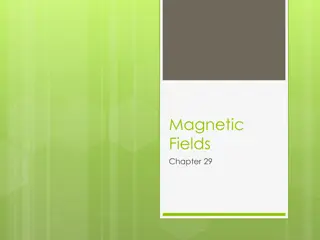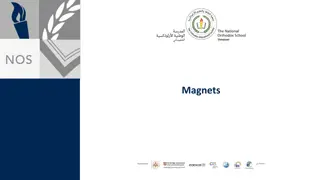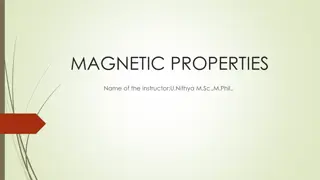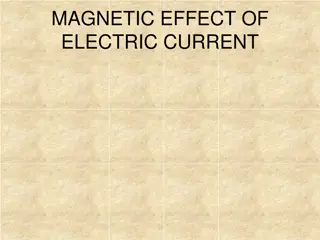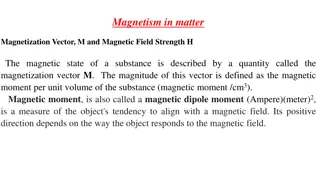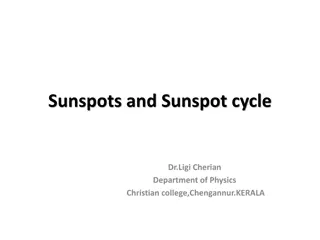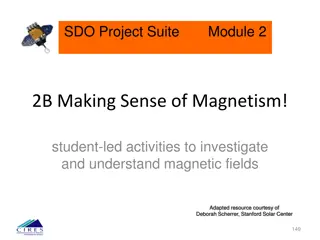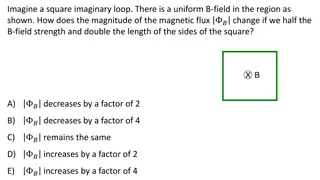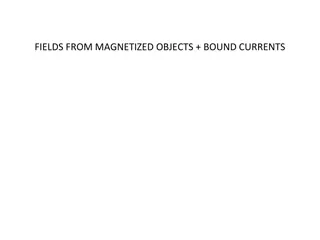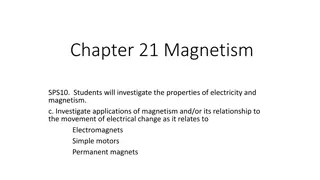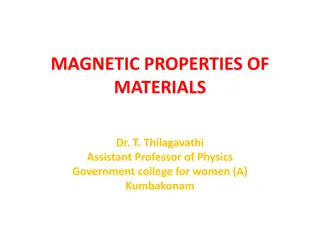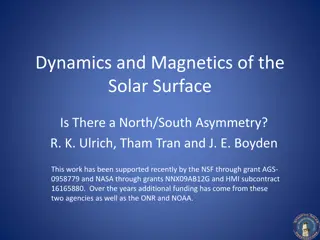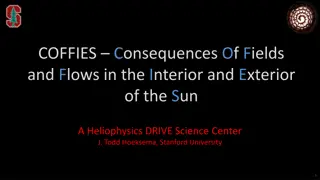Statistical Analysis of Solar Magnetic Fields from Hinode/SOT SP Data
Statistical analysis was conducted on solar magnetic fields using data from the Hinode/SOT SP and ground-based telescopes. The study examined current helicity, magnetic twists, and helical parameters, revealing hemispheric sign rules and variations based on field strengths. Results show different helical parameter signs based on field polarity and sensitivity levels. Preceding studies confirm tendencies between strong and weak magnetic fields. Data selection and reduction were based on Hinode SOT SP level 2 data from 2006 to 2015.
Download Presentation

Please find below an Image/Link to download the presentation.
The content on the website is provided AS IS for your information and personal use only. It may not be sold, licensed, or shared on other websites without obtaining consent from the author. Download presentation by click this link. If you encounter any issues during the download, it is possible that the publisher has removed the file from their server.
E N D
Presentation Transcript
Current Helicity and Twist of Solar Magnetic Fields from Hinode/SOT SP and Ground Based Telescopes Data K. Otsuji, T. Sakurai National Astronomical Observatory of Japan K. Kuzanyan IZMIRAN, Russian Academy of Sciences, Russia
Abstract Statistical studies on the current helicity and magnetic twists of magnetic fields in solar active regions The hemispheric sign rule current helicity is mainly negative/positive in the northern/southern hemispheres of the Sun. Spectro-Polarimeter (SP) of Hinode Solar Optical Telescope Data obtained from 2006 to 2015 Computed magnetic twistiness parameters average values of current helicity several kinds of twist of magnetic field Generally, the hemispheric sign rule has been reconfirmed for the weak field range. On the other hand, more stronger field area showed anti-hemispheric rule.
Calculation of Helical Parameters (Curl B)z (Curl ?)?=??? ?? ??? Rotation of the magnetic field on x-y plane ?? Current helicity density ???= (Curl ?)? ?? Twist Local twist (Bao and Zhang 1998) ?(0) ???= (Curl ?)?/?? Average twist (Hagino and Sakurai 2004) ?(1) ??= (Curl ?)? sign ?? / ?? Global twist (Tiwari 2009) ?(2) ?= ???/ ??2
Sign of Helical Parameters Positive sign CCW from Positive polarity CW from Negative polarity Negative sign CW from Positive polarity CCW from Negative polarity Sensitive to Weak field range (?(0) - + + - ???) Medium field range (?(1) ??) Strong field range (?(2) ?, Hcz)
Preceding results (Ground) Current helicity is mainly negative/positive in the northern/southern hemispheres of the Sun. Bao & Zhang 1998, Zhang, Bao, Kuzanyan 2002 Using ground based fileter type magnetogram
Preceding study (SOT/SP) Otsuji et al. 2011 Opposite tendency of sign of helicity between the stronger and weak magnetic field. Smoothing (mimicking atmospheric seeing effect) fluctuates the original trend of hemispheric rule. To confirm these characteristics using more large dataset obtained by Hinode/SOT
Data selection and reduction Hinode SOT SP level2 data Available from http://www.csac.hao.ucar.edu/ MERLIN code Milne-Eddington gRid Linear Inversion Network Data period: 2006-2015 Data selection criteria 1. Near disk center (<30deg) 2. FOV of map>10,000 [arcsec2] 3. area(|B|>1kG)>1,000[arcsec2] 4. Ratio of strong fields=area(|B|>1kG)/FOV~0.1-0.2 Selected: 2270 magnetograms of 296 Active Regions 180 degree disambiguation Non potential approximation method (NPFC: Georgoulis 2005)
???Butterfly diagram ?(0)
Latitude dependency of parameters Every parameter show the hemispheric-rule in weak field range and anti-hemispheric-rule in strong field range
Conclusions We found different properties of helicity through the strong and weak values of magnetic field components: current helicity for the weak magnetic fields (absolute field strength < 300 G) follows the so-called hemispheric sign rule [N-/S+], no smoothing On the other hand, stronger field component does not obey the hemispheric rule The characteristics of helical parameters in solar active regions were confirmed for longer period statistical observation data. 11
NOAA 11019 helicity (No smoothing) 2009-06-04 Latitude=27.000 BT=|BL|/2 Vertical field-> anti-hem. rule horizontal field-> hem. rule
Example distribution of current helicity and local twist Helicity Local twist Bz 13








